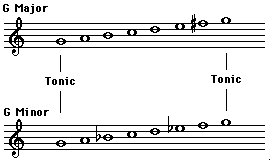
Each note of the scale, or scale degree, has a conventional name. The most important scale degree is the tonic, the second most important is the dominant. The names of the other scale degrees reflect their relationship to the tonic or dominant.
| Scale Degree | Note Number in Scale |
Comments | Solfege
Name |
| Tonic | 1 |
Note that all other notes "gravitate" towards | do |
| Supertonic | 2 |
Note above tonic | re |
| Mediant | 3 |
Half way between tonic and dominant | mi |
| Subdominant | 4 |
Fifth below tonic | fa |
| Dominant | 5 |
Second most important note after tonic | sol |
| Submediant | 6 |
Half way between tonic and subdominant | la |
| Subtonic | b7 |
Whole step below tonic | sa |
| Leading Tone | 7 |
Half step below tonic | ti |
The tonic is the first (or eighth) note of the scale, and is often described as the note that feels most “at rest”, or as "home base."

The supertonic is the second note of the scale. The prefix “super” (above) indicates the note above the tonic.
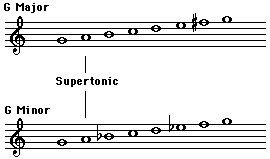
The mediant is the third note of the scale. The term mediant (median or middle) indicates the note midway between the tonic and dominant.
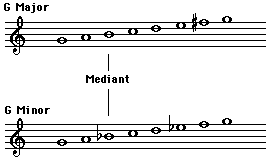
The subdominant is the fourth note of the scale. The prefix “sub” (below) indicates the dominant (fifth) below the tonic.
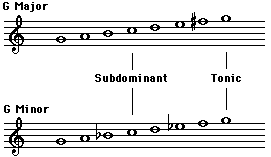
The dominant is the fifth note of the scale. Its name reflects its importance.
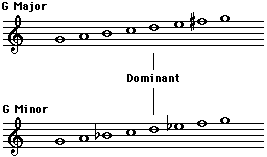
The submediant is the sixth note of the scale. The term submediant (below - median, middle) indicates the note midway between the tonic and subdominant.
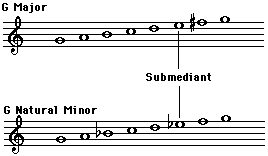
The subtonic is the seventh note of the natural minor Scale. The subtonic is a whole step lower than the tonic. The prefix “sub” (below) indicates the note below the tonic.

The leading tone is the seventh note of the major, harmonic, and melodic minor scales. The leading tone is a half step lower than the tonic. Its name indicates that it is used melodically to lead into the tonic.
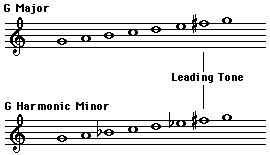
Revised by John Ellinger, Spring 2012.